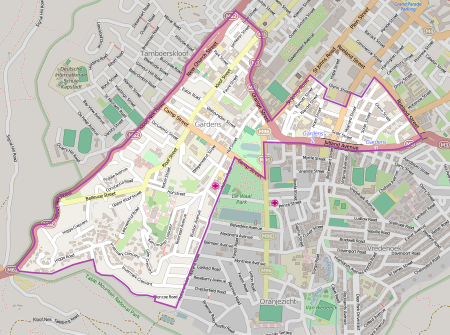Gardens, Cape Town
Suburbs of Cape TownUse South African English from March 2017

Gardens (or The Gardens) is an inner-city suburb of Cape Town located just to the south of the city centre located in the higher elevations of the "City Bowl" and directly beneath Table Mountain and Lion's Head. It is an affluent neighbourhood populated mostly by young professionals and contains numerous chic restaurants, hotels, boutique shops and loft apartments. The suburb is also a hub for the Cape Town creative industry, home to e.tv at Longkloof Studios and many modelling agencies, production and publishing companies and associated industries.
Excerpt from the Wikipedia article Gardens, Cape Town (License: CC BY-SA 3.0, Authors, Images).Gardens, Cape Town
Zum Hillekopf,
Geographical coordinates (GPS) Address Nearby Places Show on map
Geographical coordinates (GPS)
| Latitude | Longitude |
|---|---|
| N -33.933333333333 ° | E 18.408333333333 ° |
Address
Zum Hillekopf 24
59964
Nordrhein-Westfalen, Deutschland
Open on Google Maps










